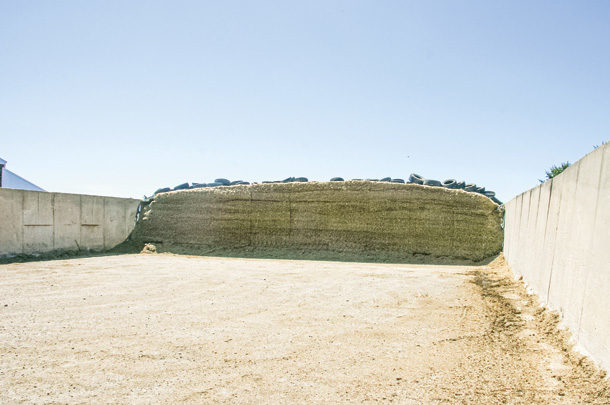During his webinar, “Tools for Helping to Determine On-Farm Forage Inventories,” presented by the University of Wisconsin – Madison Extension as part of their Growing and Feeding Alternative Forages webinar series last year, Kevin Jarek shared helpful tips on how to assess forage inventories and how they can be useful.
Why do a feed inventory?
Establishing a feed and forage inventory is an important tool for the operation of many farms. It can provide value to the farm for a variety of reasons, including understanding current supply to mitigate the risk of running out, to calculate forage available, to determine if a given forage will run out and to calculate the daily forage needs of a herd. It also helps calculate how many days forage inventories will last.
Jarek explained, “People are weighing all their feed, so they mostly know what their current dairy herd needs are. If they know that, they know the quantity and they can figure out the number of days that is going to last. And that will tell us: Do they have an excess? Or do they have a deficiency?” All this information is valuable because it can help farms maximize their profit margin potential, as feed accounts for roughly 40% to 60% of the cost of producing milk, among other things.
In addition to this, it can help determine future forage storage needs, prevent feed loss, provide insight into how much forage should be bought or sold and what forage should be planted in the next season.
If feed sales are conducted, care should also be taken to weigh the feed that is for sale. “If there are sales involved, find a scale,” Jarek noted. He explained that when the weight of the feed is unknown, there must be a winner in the sale and a loser, as quantity will be under or overestimated and therefore impact price. Weighing feed and understanding how much is being sold is a good step toward avoiding unnecessary conflict.
Calculating feed inventories
Jarek presented several tools and spreadsheets that could be used to calculate feed inventories on-farm, particularly in cases where it is not as straightforward as making a one-time volume calculation. The first case he discussed focused on calculating feed when the silo is not full. In Jarek’s example, he used a 20-foot by 60-foot silo with a settled depth of 55 feet. Using dry matter (DM) to calculate, Jarek described a scenario where 20 feet of silage is removed from the silo. Referencing a simple table that included tower silo capacities, Jarek calculated the weight in the silo when it was full at 55 feet. He then calculated the weight of the 20 feet of removed silage. Once he knew the tonnage of the full silo and the removed silage, he subtracted the removed weight from the full weight to find the weight of silage remaining. In Jarek’s example, this was 104 tons of DM.
Jarek pointed out that a common mistake is to simply calculate the weight of a 35-foot depth of silage. Looking at the silo in his example, this would equate to 74 tons of DM. “If you do it incorrectly, that’s 30 tons of dry matter. That’s several thousands of dollars’ worth of feed. That’s a mistake people can’t afford to make,” Jarek explained.
Silo bags can also be challenging when calculating forage inventories, as the density of the bag can vary a lot. The standard silo bag density is 13 pounds of DM per cubic foot. If the silo bag density is above or below this standard, a density multiplier should be used to adjust calculations accordingly. Many factors influence the silo bag’s density: how tight the press was, tractor horsepower and speed during filling. The goal when filling the bag should always be to fill it as densely as possible. As with tower silos, tables are available on the internet to provide estimates of silo bag capacity.
Classifying feeds
Once a feed inventory has been made, efforts should be taken to identify the quality of feed available. If possible, forages should be separated into categories of high-quality, mid-quality and low-quality. When forages are categorized by quality, inventory of each category will provide information as to which forages have deficient, excess or adequate supplies.
Analyzing this information together, farms can determine how much forage will be necessary to survive until the first forage harvest in the upcoming season. When done correctly, a forage inventory can help identify the feed reality of a farm, helping to mitigate and address changes to supply and any uncertainty. ![]()
Staff photo.

-
Emma Ohirko
- Editor
- Progressive Dairy
- Email Emma Ohirko









